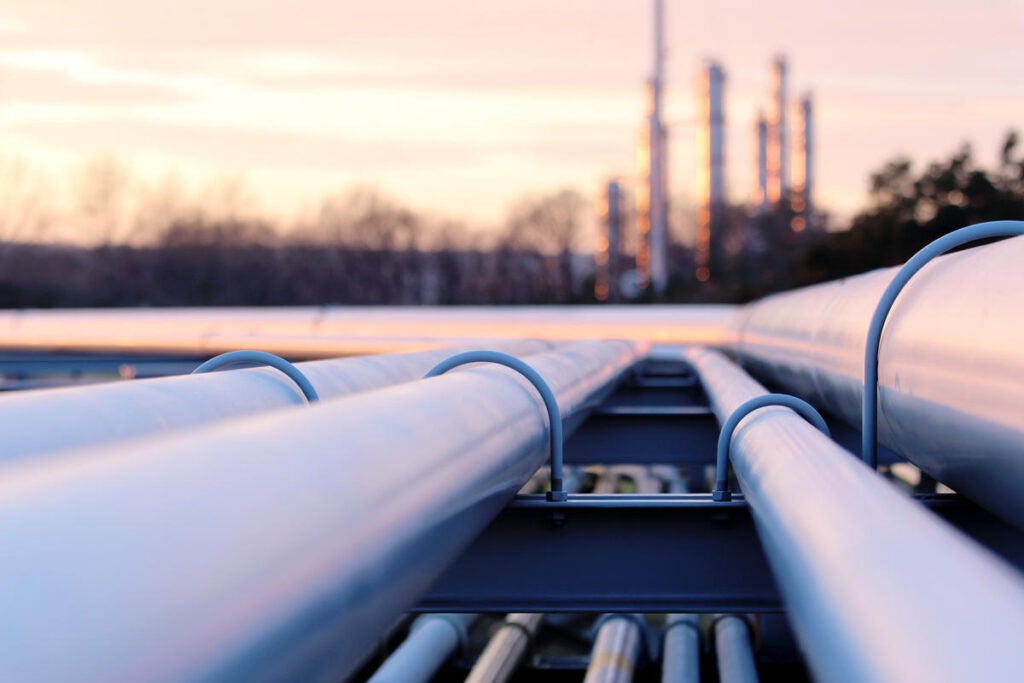By Ilissa Ocko, Senior Climate Scientist, Spark Climate Solutions; and Sofia Esquivel Elizondo, Low Carbon Energy Scientist, EDF
It’s no secret that there are big ambitions for hydrogen as a climate solution. Many champions of proposed hydrogen infrastructure argue that it’s a viable swap to move hydrogen through vast networks of existing natural gas systems. But although there are possibilities to reuse some of the existing natural gas infrastructure for hydrogen, these roles are limited by safety and energetic considerations to a small fraction of the current energy we derive from fossil natural gas; and there are serious engineering concerns around repurposing a system that wasn’t designed for hydrogen.
To assess the challenges, we published a paper, led by Hydrogen Science Coalition’s Paul Martin with other expert engineers and scientists in the journal, Energy Science & Engineering. We found that putting hydrogen into existing natural gas infrastructure is more complex than it might first appear and could have major consequences for safety, energy supply, climate and cost. Careful thought must be put into designing and developing hydrogen infrastructure that is fit for purpose.
Why hydrogen infrastructure must be designed and built for purpose Share on XToday’s gas infrastructure wasn’t made for hydrogen
Currently, the infrastructure to safely and efficiently transport the 150 million tons of low-carbon hydrogen the International Energy Agency estimates the world could demand by 2030 isn’t available.
Our natural gas system, in the form of long-distance transport, local distribution and end-use equipment, was designed specifically for natural gas.
While it might seem logical to repurpose this infrastructure for hydrogen, natural gas (which is ~95% methane) and hydrogen have fundamentally different physical and chemical properties. Hydrogen is the smallest molecule: eight times lighter than methane, less dense in terms of energy per mass, more reactive and more flammable.
It has been known for decades that today’s natural gas transmission pipelines can crack and fracture when transporting large amounts of hydrogen, leading to safety risks, like flammability hazards, that make existing networks dangerously unsuitable for transporting 100% hydrogen without major and costly retrofits. And even with small percentages of hydrogen mixed into high–pressure natural gas pipes made of high‐yield strength carbon steels considerable acceleration of fatigue cracking, by as much as 30‐fold, is expected; with fracture resistance of the piping material reduced by as much as 50%.
Hydrogen is also a highly potent climate-warming gas. Its chemistry in the atmosphere increases the amounts of major greenhouse gases — including methane — ultimately leading to 37 times more warming than CO2 over the first 20 years after it is emitted. As leaks add up along the entire system (from cracks and hydrogen-incompatible materials), this can create real climate warming risks.
Infrastructure designed for hydrogen
Despite its challenges, hydrogen has an important role to play as part of the clean energy transition, so we will need to invest in appropriate infrastructure. If we let science, engineering and evidence show us where hydrogen can provide the highest value with the lowest risk, we can make smart decisions and design an infrastructure network that’s truly fit for purpose.
Some core principles include:
- Infrastructure for appropriate use cases: Hydrogen will be key to help decarbonize some of the 20-30% of global CO2 emissions that can’t be reduced through direct electrification alone, such as the heavy industrial processes used to make fertilizers or steel. But in most other cases, alternatives to hydrogen, such as using renewable electricity directly, are safer, cleaner and cheaper. Hydrogen shouldn’t be viewed as interchangeable where natural gas is used today. For example, in many cases, piping hydrogen (as we currently do with natural gas) into buildings and homes does not make sense from an economic, climate and safety perspective.
- Infrastructure designed specifically for hydrogen: Considering hydrogen’s unique properties and narrow but important scope for use cases, there are targeted sectors that would benefit from hydrogen-specific infrastructure. New systems should be designed specifically to contain and move the hydrogen molecule for these applications. Material selection, system attributes, storage systems, appliances and devices all need to be designed, tested, and optimized specifically for hydrogen’s characteristics. Careful examination of each component of the value chain is required to determine compatibility and safety with that system. Materials used for pipes is a good example: In general, low yield-strength steel pipes are better for hydrogen as they are not particularly susceptible to fatigue cracking unless both temperature and the partial pressure of hydrogen are high.
- A short and efficient hydrogen value chain: With hydrogen’s unique benefits and risks, science points towards keeping its physical value chain as short as possible. To reduce emissions from processes and infrastructure, hydrogen production should be targeted to where the supply is needed. For example, a short and efficient hydrogen value chain could contain production, transportation, storage and usage within industrial clusters.
Although it might seem like an attractive solution, repurposing natural gas infrastructure often doesn’t work when you take into account the engineering realities. Industry and policymakers need to carefully consider expert engineering advice in order to design hydrogen systems that are safe and make good environmental and economic sense.










